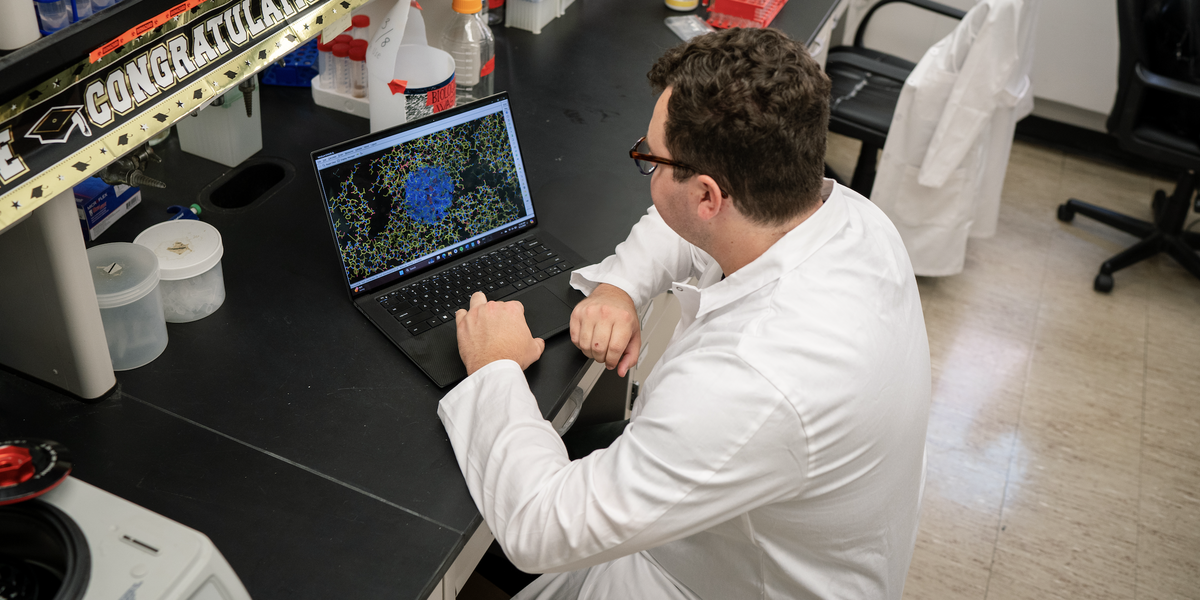
Stubborn. Indestructible. Persistent. “Forever.” These are just a few words used to describe per- and poly-fluoralkyl substances (PFAS), chemicals that are commonly used in products like raincoats, non-stick pans, fire extinguishers and heart valve replacements.
By the time several PFAS compounds were publicly linked to cancer and developmental health issues, they were already ubiquitous in our environment. And here’s the problem: they may last a really, really long time. Perhaps hundreds to thousands of years… Or will they?
Not if Larry Wackett has anything to say about it. New research led by his lab members and collaborators may help assuage fears that PFAS chemicals will exist in perpetuity. Not only did his team identify a biological system capable of degrading the compound, they also discovered it may be more common than previously thought.
“We found the capability for defluorination on six continents,” says Wackett, a McKnight Professor in the Department of Biochemistry, Molecular Biology and Biophysics (BMBB). His team, including Research Professor Jack Richman, researcher Calvin Thoma and Associate Professor Yujie Men of University of California - Riverside, made the discovery using the genome databases of samples collected at wastewater treatment sites, which are often treasure troves of microbial diversity.
When Yujie Men’s lab found microbes in a wastewater treatment facility that led them to an Acetobacterium capable of breaking down forever chemicals, one of Wackett’s lab members, Calvin Thoma, set to work identifying if a suspected enzyme (a protein essential for carrying out chemical reactions essential to life) in the bacterium would “fit” the perfluorinated molecules in its reactive site. He used bioinformatic modeling tools to find the perfect match – kind of like tetris or fitting the right key into the right lock.
It worked. Their team used the DNA of the suspected enzyme to cross-reference genome databases from other waste sites to determine how prevalent the enzyme was elsewhere. “We were really surprised,” says Thoma, who will start as a Ph.D. student in BMBB’s graduate program this fall. “We’d never seen something that could work on PFAS with so many fluorines before.”
While great news, Wackett acknowledges it’s just the beginning of a long journey. Even if the associated enzymatic mechanisms of the Acetobacterium spp. can work to break down PFAS compounds, the organisms utilizing the enzymes are often fatally stressed by the toxic byproduct fluoride released during the degradation process. Nature would likely figure out a way for bacteria to evolve and adapt to this toxicity over time, but it might be several human generations before that happens. Unless we intervene.
“I think we’re showing that it’s possible,” says Wackett. “We can use our knowledge of how bacteria deal with fluoride stress to engineer systems to get rid of it where we want to get rid of it.” Wackett is already working with Biotechnology Institute Director and fellow BMBB professor Claudia Schmidt-Dannert to integrate a PFAS-degrading bacteria into a biofilm reactor for industrial use that acts as a living “filter” for PFAS compounds.
Modern technology makes it possible for scientists like Wackett to tweak biological systems, potentially ironing out the wrinkles that make it difficult for some of these microbes to successfully and sustainably degrade toxic PFAS compounds. “If we alter the bacteria with a mechanism that can overcome the toxicity, we may be able to focus on actually degrading PFAS compounds,” says Schmidt-Dannert.
The findings immediately hit home with the scientific community. Almost 3,000 people viewed their newest article in a preprint sharing site months before it was published in Science Advances. “It gives me a lot of hope that there’s a mechanism that does this,” says Thoma. “Adding the adjective ‘forever’ to these chemicals has cursed us in a way. I really think we can figure this out – we just need to teach the microbes how to catch up. You know, speed up the timeline.” – Adara Taylor